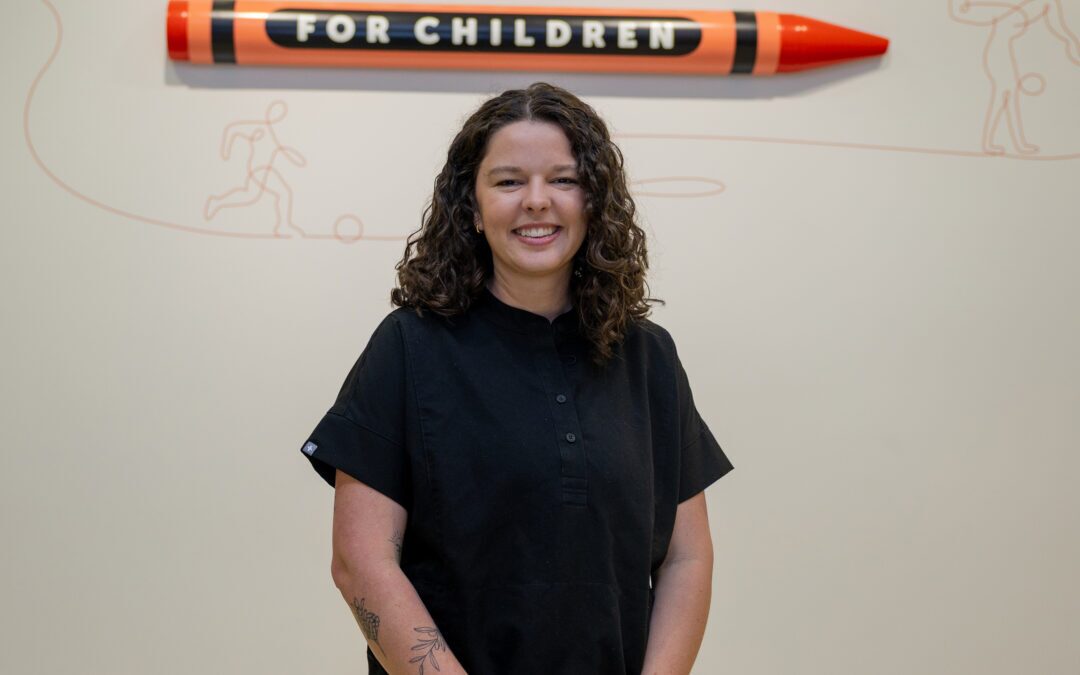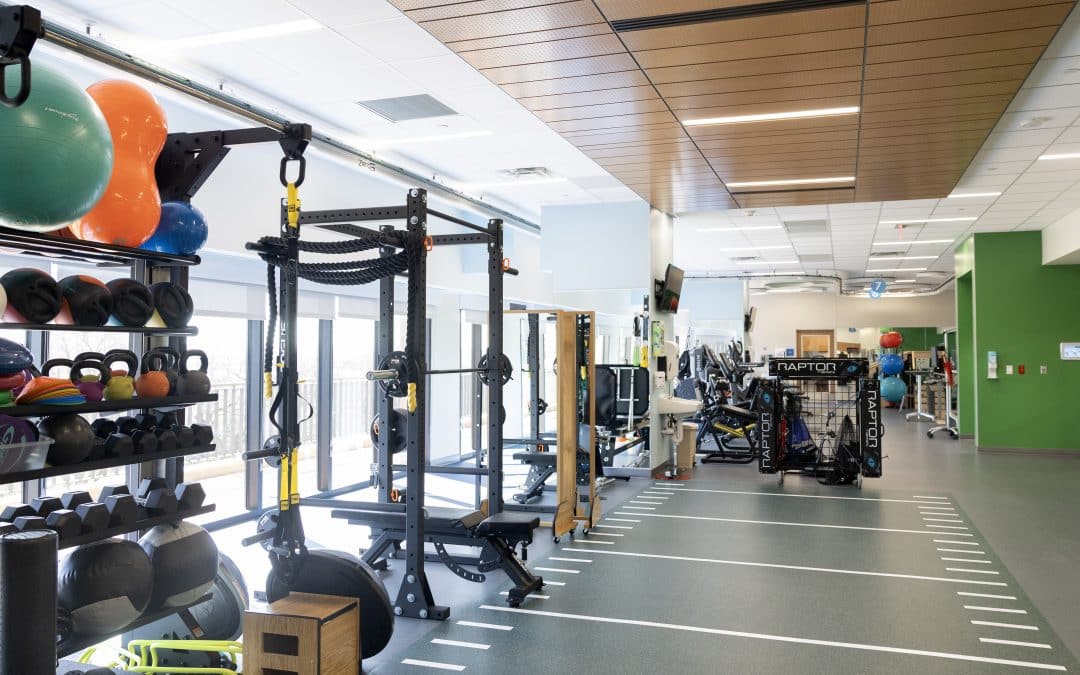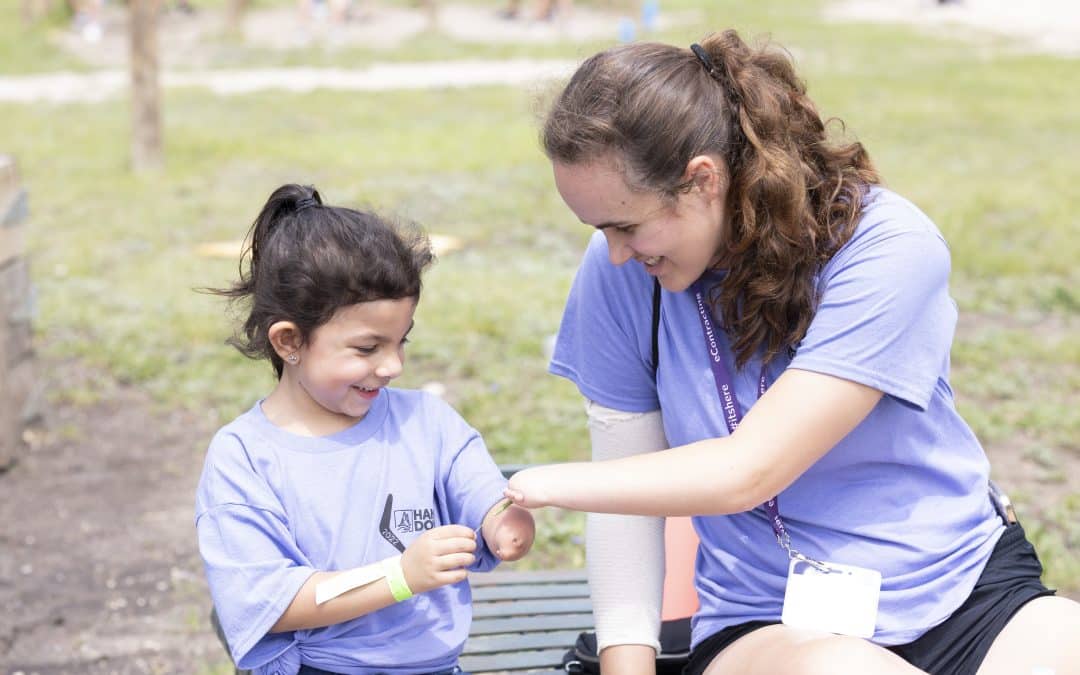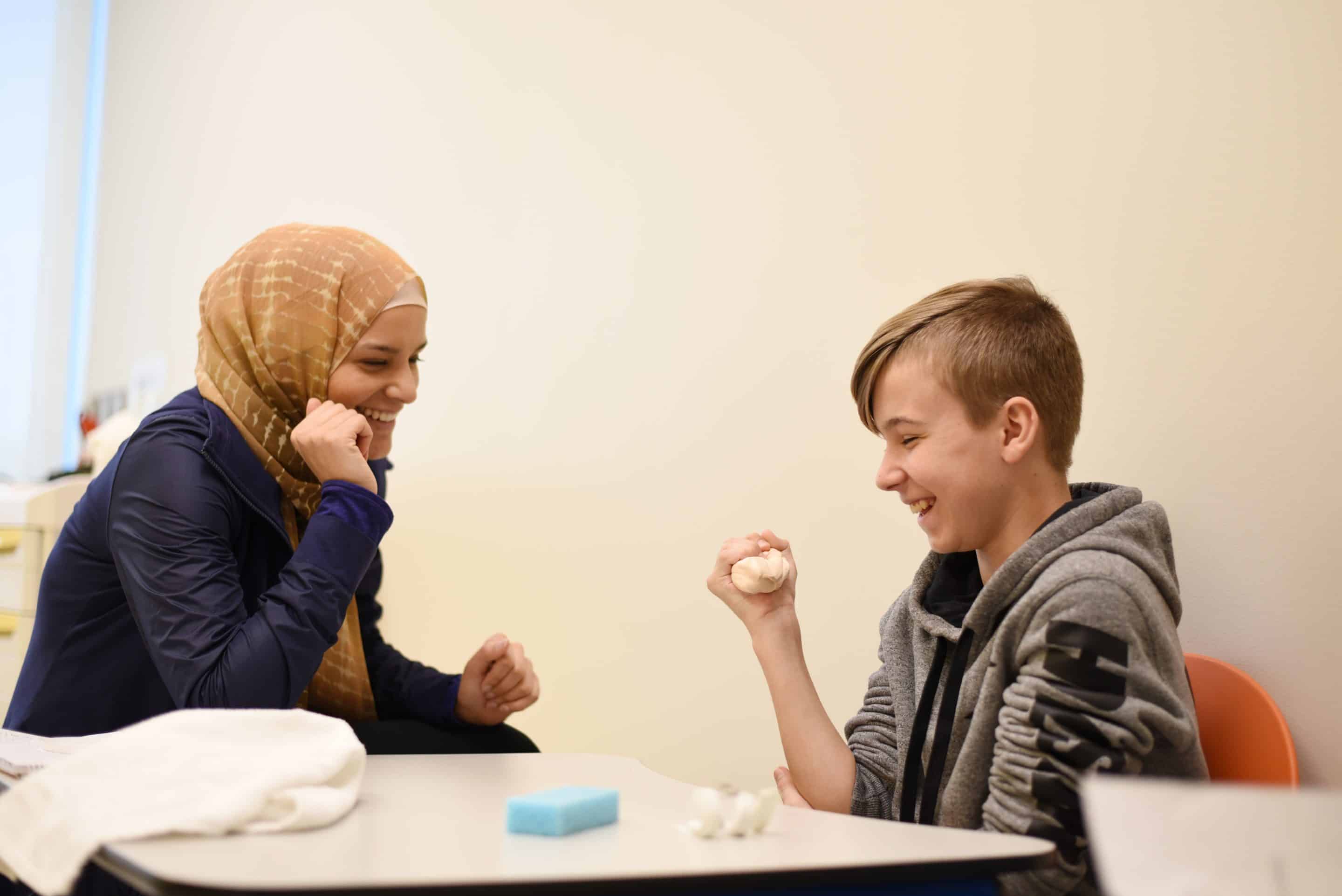
Get to Know Our Staff: Amy Sitabkhan, Therapy Services
I am an occupational therapist (OT). I primarily work in the Hand Clinic and in outpatient settings. I meet with patients regularly to work on specific goals to improve their ability to live as independently as possible. I provide treatment interventions, which includes exercises, adaptive equipment education, splint fabrication, serial casting, psychosocial education and therapeutic activities!
What is the most fulfilling part of your job?
I enjoy the variety in my work. Each day brings something new. For one session, I’m helping a child with cerebral palsy through constraint therapy. For the next session, I’m creating adaptive devices for a child with arthrogryposis or guiding a child through exercises after a traumatic orthopedic injury.
Working as an OT in outpatient and clinic settings allows me to build ongoing relationships with both patients and their families. It’s incredibly rewarding to watch their progress and see them gain confidence as they achieve new milestones throughout their journey.
What makes Scottish Rite a special place to you?
From the moment you walk through the doors, you hear piano music, you see smiling faces and you smell buttery popcorn. Scottish Rite is more than a hospital. It’s a place filled with hope, expert care and providers who will go above and beyond, regardless of the patient’s ability to pay.
What made you choose a career in health care?
I have a passion for helping others and guiding them towards greater independence. In the past, I have experienced being on the patient and family side of health care, and I can confidently say that health care professionals serve as a light during challenging times by providing the necessary care and kindness. I knew I wanted to be that source of light and hope for patients when they need it the most.
What is something unique you get to do in your position?
So many things! I get to transform and implement big ideas into actual solutions that will help my patients. For example, I founded and serve as the director for Hand in Hand, a support group for children with congenital hand and upper limb differences. I wanted to create a community for our patient families beyond the clinic room by addressing psychosocial wellness, health literacy and occupational independence through modified play-based group activities. I am so appreciative of the support I have received from the Therapy Services team, the Hand team and executive leadership. Also, I want to give a special shout-out to the Hand in Hand support group planning team, as I would not be able to run the group without them!
What’s your favorite thing to do outside of work?
I like trying new restaurants with my friends, cooking and traveling! I have also been really into audiobooks recently.
Do you have any hidden talents?
I used to be in choir for 7 years and had solo performances. Now, my talent is reserved for car rides.
What brought you to DFW?
I am originally from Ohio. When my dad got a new job, we moved to Texas when I was in elementary school. I hopped around to Austin, Galveston, San Antonio, but ended up back in the DFW area.
If you could travel to anywhere in the world, where would you go and why?
I would go back to Italy! Honestly, I could eat gelato 24/7. The architecture and culture were also cool.
If you had to pick one meal to eat for the rest of your life, what would it be?
I hope coffee counts, because iced caramel lattes are really my breakfast, afternoon pick-me-up and dessert.
What movie do you think everyone should watch at least once?
“The Pursuit of Happyness”
What was the first concert you attended?
I think it was a Demi Lovato concert.
Favorite hidden DFW gem?
I’m not sure if it’s a hidden gem, but Dos Arroyos Comida Casera has really good Tex-Mex, and it’s right next to a cute little ice cream shop called Sweet Firefly!
If you were to have a movie based on your life, which actress/actor would you choose to play your character?
Mindy Kaling
What is some advice you would give your younger self, OR what’s the best piece of advice you’ve received?
Be kind to yourself. You are doing the best you can.







